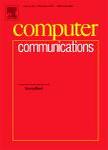版权所有:内蒙古大学图书馆 技术提供:维普资讯• 智图
内蒙古自治区呼和浩特市赛罕区大学西街235号 邮编: 010021

作者机构:Vietnam Natl Univ Int Sch Lab Data Sci & Optimizat Complex Syst Hanoi Vietnam
出 版 物:《COMPUTER COMMUNICATIONS》 (计算机通信)
年 卷 期:2019年第133卷第Jan.期
页 面:51-58页
核心收录:
学科分类:0810[工学-信息与通信工程] 0808[工学-电气工程] 08[工学] 0812[工学-计算机科学与技术(可授工学、理学学位)]
基 金:National Foundation for Science and Technology Development (NAFOSTED) [102.02-2018.09]
主 题:Routing Dedicated protection WDM optical networks Network coding Integer linear programming Bi-objective model
摘 要:The explosive traffic growths are pushing the transport network close to its capacity limitation, raising critical issues about fiber capacity crunch. In this context, network coding has been emerging as the promising technique to improve the network capacity efficiency thanks to the capability of better resources utilization. The application of network coding to the realms of failure recovery in optical networks has paved the new way for more efficient protection schemes and indeed, XOR network coding combined with dedicated protection has been proposed, investigated and developed to challenge the well-established understanding of trading capacity efficiency for recovery speed and vice versa. In order to maximize the benefits empowered by network coding in this case, the problem of 1 + 1 routing and network coding assignment (1 + 1 RNCA) has to be optimally solved. Apart from traditional 1 + 1 routing, the decision of network coding information has also to be taken into account including the selection of pair of demands for encoding and the respective coding node and coding links. In this paper, we propose a bi-objective integer linear programming model of the 1 + 1 RNCA problem aiming at minimizing the conventional routing cost as the primary objective and furthermore minimizing the number of nodes with coding capabilities as the secondary objective. Our formulation uses a weighting method to combine two objectives into an integrated one and we provide a rigorous analysis on configuring the weight coefficients to capture the desired priority of individual objectives. The efficiency of our integrated objective model in comparison with reference designs based on the single-objective model, 1 + 1 routing and 1 + 1 RNCA, is numerically evaluated on different realistic topologies and traffic sets. Extensive simulation demonstrates that our proposal outperforms traditional approaches when it could achieve the lowest routing cost while simultaneously employing minimal nu